Estimated Fees in India
₹ 500 to ₹ 600 per hour
Find Clay Modeling Classes Fees in your locality
I am a studio potter. Experience of more than 8 years. Graduation in Fine arts from Mumbai. I teach wheel pottery, handbuilding pottery. I have a well equipped pottery studio. Also takes art classes with a different view.
I have more than 10 years of experience in my field and taught more than 250 students. I take online classes of maths and English even for foreign students. I am teaching US kids phonics, Bhagwad gita and different form of Arts
I am an experienced, qualified teacherand tutor with over 24 years of e provide hobby classes like Art and craft , painting classes, pxperience in teaching Fine Arts, and Hindi language classes Painting, caligraphy, NIFT coaching classes.,worked in Army school. Now running my own coaching center in south delhi
I have been teaching art and craft for a long time now. I look forward to share this to the ones (irrespective of age) who are dedicated and determined. I encourage art enthusiasts to reach professional levels and be a promising artist.
I am an experienced, qualified teacher with over 5 years of experience in Art and Craft as well as Hand Painting, Digital Art teaching.
Academic Qualifications: • M.F.A. Painting, University of Hyderabad, 2010, 1st class 1st Rank with distinction (Gold Medal) • B.V.A. from College of Art & Design University of Burdwan, 2008,1st class • Diploma in commercial art from Anima Educational Center, Kolkata ,1st class • Diploma in Interior Decoration & Design from Durgapur Youth Centre (Govt. of WB) • B.Com, Durgapur Government College, 1995 Awards & Scholarships: Awarded Emerging Artist “city award” 2016 from Prafulla Dhanukar Art Foundation, Mumbai Awarded Emerging Artist “State award” 2015 from Prafulla Dhanukar Art Foundation, Mumbai Awarded S.L Parasher Medal(Gold medal) from University of Hyderabad, 2011 Received Merit Scholarship from University of Hyderabad, 2009 Received Achiever Award, 1st semester to 3rd semester, from UoH,2008-10 Burdwan Dist. Award, 1999 to 2003, from West Bengal Cottage & Small Scale Industries Group Exhibitions: May’2016 -"Group Exhibition at ", Chitramayee State Gallery of Fine Arts, Hyderabad March’2016 -"Group Exhibition at ", Chitramayee State Gallery of Fine Arts, Hyderabad Jan 2015 -"Shrishti Art Mela ", at Shrishti Art Gallery , Hyderabad Jan2015 - "11th Anniversary exhibition ", Chitramayee State Gallery of Fine Arts, Hyderabad August2014 -"108 Ganesha ", Chitramayee State Gallery of Fine Arts, Hyderabad Sept’2012- ’jiva’ at State Art Gallery,Hyderabad, The Concept Of Biodiversity, Curated by Dr,Avani Rao Gandra, 2011 -"Expressions of 14 Shades", Chitramayee State Gallery of Fine Arts, Hyderabad 2011 - Icon Art Gallery, Hyderabad 2010 - “On the way”, Shristhi Art Gallery, Hyderabad 2009 - Academy of fine Arts, Kolkata 2007 - College of Art & Design Annul Art exhibition, Academy of Fine Arts, Kolkata 2006 - All India 71st annual Art exhibitions, organized by Academy of Fine Arts, Kolkata 2006 - Charukala Art exhibition, Kolkata 2005 - Paper pulp sculpture exhibited at Indian Handicraft Expo, Buckingham, London 2005 - Krisna Sayar Utsav, Burdwan Workshops: 2015-16 “Drawing Space’’ Site specific Installation at Banyan Hearts Residency, Kismatpura,Hyderabad 2011 - Art Residency at Icon Art Gallery, Hyderabad 2011 - Watercolour workshop at Icon Art Gallery, Hyderabad 2010 - Workshop at L. V. Prasad Eye Institute, Bhubaneshwar 2009 - Workshop on street painting under Tracy Lee, organized by UoH 2009 - Site specific workshop under Shanchayan Ghosh organized by S.N.School, UoH 2008 - Print making workshop at university Of Hyderabad, by Vijay Bagudi from Broda 2007 - Site specific workshop under Shanchayan Ghosh from Santiniketan, organized by College of Art & Design, University of Burdwan 2006 - Painting Workshop under Tapas Konar at College of Art and Design, Burdwan 2006 - Workshop at College of Visual Art, organized by college of Visual Art, Kolkata Experience: • Delivered a lecture on ''Teaching Concepts through Icon'' at Ali Yavar Jung National Institute for the Hearing Handicapped, Hyderabad, for the special Educators, Speech & Hearing Professionals & Trainees - 2010 • Conducted workshop on Papier Mache at IIIT-Hyderabad, 2010 & 2011 • Conducted workshops on paper pulp at Vivekananda Vani Prachar Samithi, Durgapur, 2005 Work Experience: 2013 June onwards - Art teacher at Sancta Maria International School, Hyderabad (IGCSE, AS & A Levels) 2012-13 Art & Craft teacher at EURO SCHOOL, Hyderabad,(CBSE) 2012 - Graphic Designer at Asymptotica, Hyderabad 2011 - As an artist at S.R. Associates, master in landscaping, Hyderabad 2010-11-Art & Craft teacher at Global edge school, Hyderabad(CBSE) 2011 - Art Instructor at Takshsila Institute of Professional Studies, Hyderabad 2003- till date - Practical Examiner in fine Arts of Bangiya Sangeet Perishad, Kolkata 2010-2011 – Art & craft teacher at Global Edge School, Hyderabad 7-years experience as art teacher at Udvabon - The school of Fine Arts, Durgapur Steel City Collection of my work 1) University Of Hyderabad (Painting Mural) 2) Laurel (Boston, US, Privet Collection) 3) Kavita Vermuri (Hyderabad, Privet collection) 4) Ranigunj Co-operative Bank, Ranigunj, West Bengal. 5) LV Prasad eye Institute, Bhubaneswar 6)Rebecca ,USA Statement of artistic interest An artist can do painting, printmaking, sculpting as well as many other things at the same time. But for our academic purpose we should do specialization in one of these areas in our six years study. I finished my graduation and post-graduation – specialization in painting – but my interest is also in clay modeling, coil and hollow pinching, terracotta murals, glaze tiles murals, paper pulp and paper Mache sculpture and plate relief murals and also in digital art. Currently I am dealing with some interesting subjects such as the food habits of middle class and lower middle class people, their struggles in life etc., And I want to capture the identity of people through their gestures such as walking, sitting, eating etc., without actually looking at their faces. Teaching how one can capture the subtle human identities is one of my
Post your Learning Need
Get customized quotes and responses from Tutors
Choose & Learn from Tutor of your choice
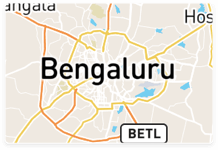
No data available
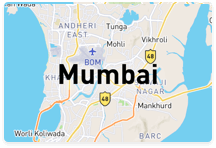
No data available
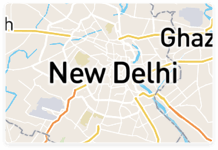
No data available
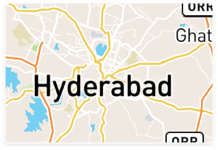
No data available
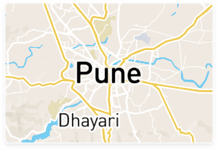
No data available
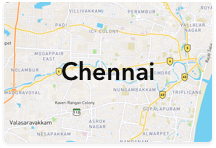
No data available
Answered on 02 Jan Learn Art and Creativity/Clay Modeling

Sadika
Clay models are used in the automotive industry and other design fields for various purposes throughout the product development process. Here are some of the key uses of clay models:
Design Evaluation:
Form Exploration:
Ergonomics and Human Interaction:
Wind Tunnel Testing:
Presentation to Stakeholders:
Decision Making:
Photorealistic Rendering:
Collaboration and Communication:
Prototype for Production:
While digital design tools and virtual simulations have become more prevalent, clay models remain a valuable part of the design process, offering a hands-on, physical representation that complements the capabilities of digital design.
Answered on 02 Jan Learn Art and Creativity/Clay Modeling

Sadika
The process of hardening modeling clay depends on the type of clay you are using. There are various types of modeling clay, including air-dry clay and oven-bake clay (polymer clay). Here are instructions for hardening each type:
Sculpt Your Object:
Air-Dry Naturally:
Turn and Rotate:
Check for Dryness:
Sculpt Your Object:
Preheat the Oven:
Prepare Baking Surface:
Place the Object:
Baking Time:
Cooling:
Follow Manufacturer's Instructions:
Ventilation:
Post-Hardening Finishing:
Keep in mind that each type of clay has its own characteristics, and the hardening process may vary. Always refer to the instructions on the clay's packaging or the manufacturer's guidelines for best results.
Answered on 02 Jan Learn Art and Creativity/Clay Modeling

Sadika
Baking modeling clay depends on the type of clay you are using. There are two main types: air-dry clay and oven-bake clay (also known as polymer clay). Here are instructions for baking each type:
Sculpt Your Object:
Drying Time:
Check for Dryness:
Sculpt Your Object:
Preheat the Oven:
Prepare Baking Surface:
Place the Object:
Baking Time:
Cooling:
Temperature Control:
Ventilation:
Avoid Over-baking:
Post-Baking Finishing:
Always refer to the specific instructions provided by the manufacturer of the clay you are using. Different brands and types of clay may have slightly different baking requirements.
Have a question about Clay Modeling Classes Fees? Ask your question and get answers from top Tutors.
Create your FREE UrbanPro profile and grow your income!
Find best tutors for Clay Modeling Classes by posting a requirement.

Get started now, by booking a Free Demo Class